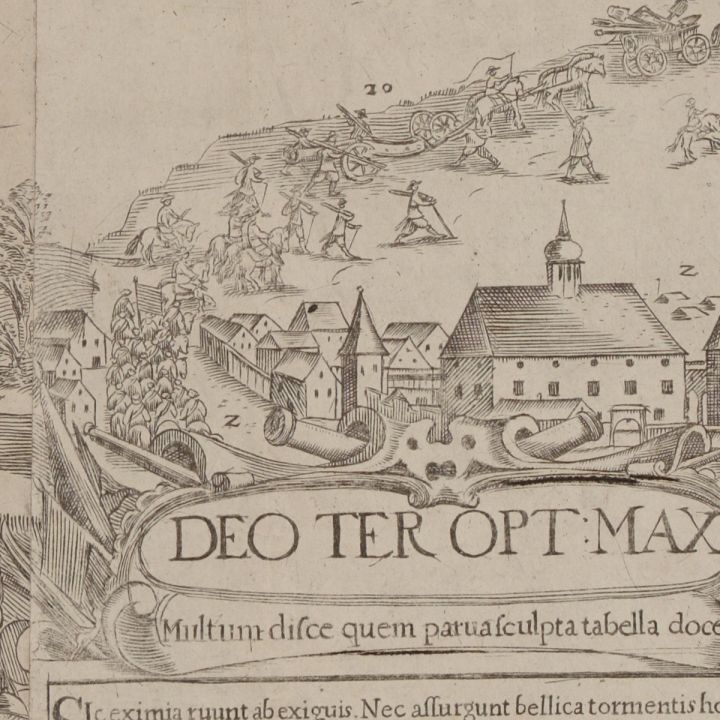R. Tower with city walls
It is believed that at least until the mid 17th century Częstochowa was hidden behind a perimeter of towers and several gate junctions. The grounds for this hypothesis were given by relatively late and sparse references in written sources and by one of the town views made in the second half of the 17th century by Jan Aleksander Gorczyn.
The earliest mention of fortifications in Częstochowa comes from a document issued by King Sigismund I the Old in 1531. A mill in front of the "gate of the city of Częstochowa" was mentioned there. A slightly later parish inspection from 1598 describes a cemetery in front of the gate, outside the city walls, and in a different place mentions a parsonage farm in front of the Cracow gate. It is known that the manor farm, gardens and church ponds were situated on the southern side, so the mentioned Cracow gate was located near the exit of the road from Cracow, through Żarki, following the left bank of the river immediately before Częstochowa (from Błeszno).
Only the engraving by J. A. Gorczyn shows a fragment of the town walls with a tower, visible from the southern side. Perhaps this very tower and this section of the wall are mentioned in the inspection document from 1660, when the mayor Aleksander Bełdowski claimed to own a certain fragment of the town fortifications. Unfortunately, the view made by J.A. Gorczyn is the only iconographic record of the town walls, as they are not shown on the copper engraving by Jan Bensheimer made a little while earlier.
References to the fortification of the city of Częstochowa appeared late in the sources and disappeared relatively early, although as late as in the 18th and 19th centuries, the city walls remained in the memory of the townspeople, clearly well preserved in the local tradition.
The scholarly literature accepts the view that the walls may have been built immediately after Częstochowa was invaded and plundered by the Moravian mercenary and robber knight Burian Puklice of Pozorice, who prowled the area at the head of some part of the army of Scibor Towaczowski of Cimburk, a Bohemian chieftain who was to besiege Wrocław on behalf of King George of Poděbrady.
The course of the walls was finally established as follows: from the west – along the line of Krakowska and Warszawska Streets; from the north – along a gentle arc around the town at Spadek Street; from the east – along Nadrzeczna Street; and from the south, also along an arc, along a closed line at Przesmyk Street. The city gates were located at the probable inlets of the above-mentioned inter-district roads: one from the south (Krakowska Street), behind which Targowa Street led on the city grounds; the other one from the north, at the extension of Senatorska Street, just after the intersection with Spadek Street; from the east, at the bridge on the Warta River, where the guest house on the city grounds turned into Mostowa Street.

